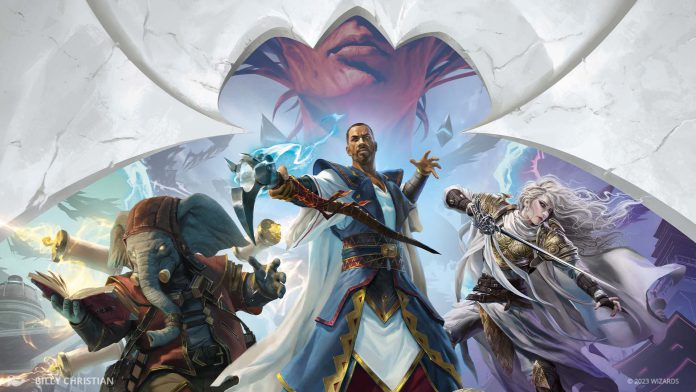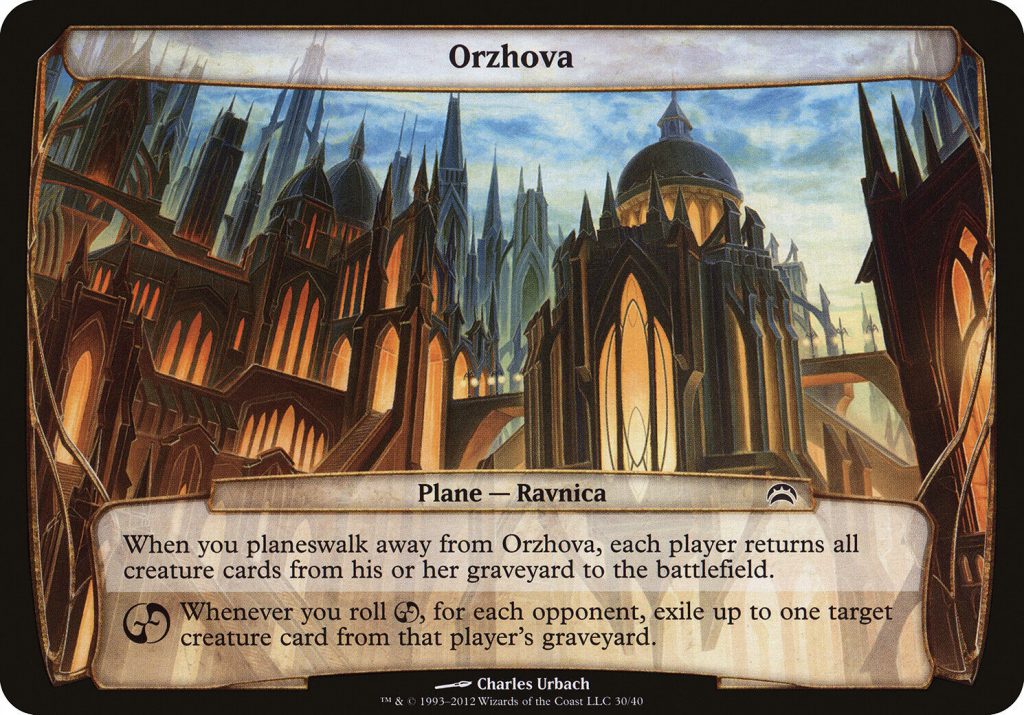At last, Magic’s newest expansion has us reaching the climax of the 4 part story arc with the Phyrexians as Elesh Norn’s forces spill out into countless planes, bringing together strange allies and forever altering the fabric of the multiverse. A new set means new mechanics, and we’re kicking off our review with a breakdown of the mechanics and their implications.
Battles
The teased new type of card, Battles, represent a new kind of thing entirely for Magic, though not exactly. Battles are somewhat similar to Planeswalkers, in that they come into play, can be attacked much like a player or Planeswalker, but also damaged by spells. Rather than having abilities you can activate, the battles so far all have enters play abilities. Thus far all Battles printed are of the Battle subtype Siege; when cast they enter play with another player as their protector. Attacking them or damaging them via spells removes defense counters, and when they run out of defense counters the Battle is exiled, then the controller (not protector) can cast the spell from exile, for free. Much like the tease with Atraxa, Grand Unifier, WotC has communicated that there will be more Battle types, but so far only Siege has been released:
205.3q Battles have a unique subtype, called a battle type. That battle type is Siege.
Battles are sort of a weird mix between a Planeswalker and a Saga, but with counters coming off, not on, and then essentially flip over into things, usually creatures but sometimes enchantments or other spells.
Some weird rules interactions are already possible – Glissa Sunslayer can forcibly remove counters, proliferate can be used to add additional defense counters, Resourceful Defense can just strip them right off (and you can put defense counters onto permanents that aren’t Battles,) Vorinclex, Monstrous Raider will make your battles enter play with double the amount of defense counters – anything that lets you manipulate counters directly will generally work. In addition, when the Battle is exiled then cast, it counts as a spell for storm count, can’t be done if your opponent has a Drannith Magistrate, and will generate a Treasure for Prosper, Tome-Bound. Battles explicitly can’t attack themselves, if they somehow become creatures they get removed from combat.
I think currently the Battles are a little lackluster. In theory they have some interesting multiplayer elements to them, player A is the protector of a Battle cast by Player B, well Player C could choose to attack that Battle. Right now there’s no particular payoff for doing so, but WotC has said there will be more Battle types, and the potential exists for pay offs for attacking other people’s Sieges, Battles that both players have incentive to attack. There’s also the potential for creatures that do things like do damage to something when they deal damage to a Battle, get treasure or card draw for hitting Battles, all kinds of things. It will be interesting to see this new design space explored. I’m glad they are starting off with a single Battle type and not completely overwhelming people, at the same time, the Battles printed so far are mostly underwhelming. I think Invasion of Zendikar is marginally playable – grab 2 basics for 4 isn’t completely terrible, just, slow. Then it can turn into another land.
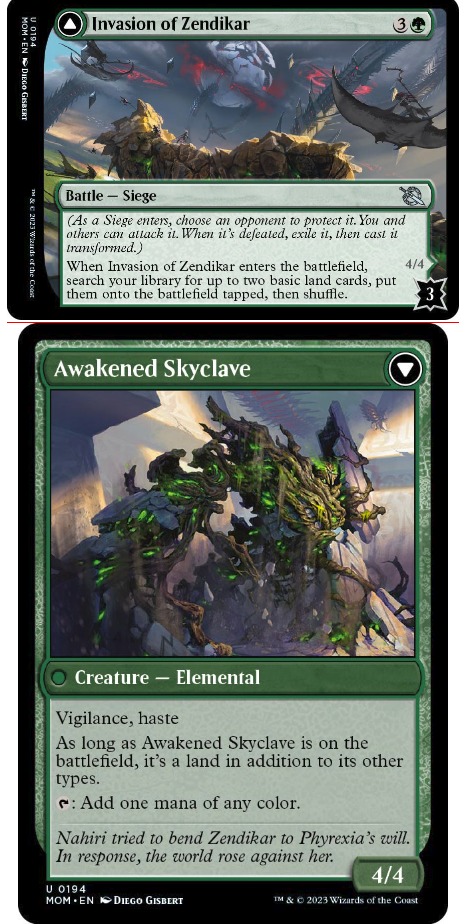
However there’s really no reason to interact with anyone else’s Battles curently. In Commander they sort of make sense, players have 40 life, giving someone effectively +3 life doesn’t really matter. It gives you something to swing at that no-one will care about, and has some payoff. In some ways you may have dorks and utility creatures sitting on the board “wasting” their inherently ability to deal damage equal to their power. Most of the Battles right now are so durdley that I don’t see it making a huge difference.
FromTheShire: The Battles are pretty neat, and they seem like they’re being pretty heavily telegraphed as something there’s support coming for soon. I would be surprised if we don’t get a Tom Bombadil-esque Commander that cares about these, which has the potential to be super fun if it’s able to get the whole table to care about fighting and defending different Battles.
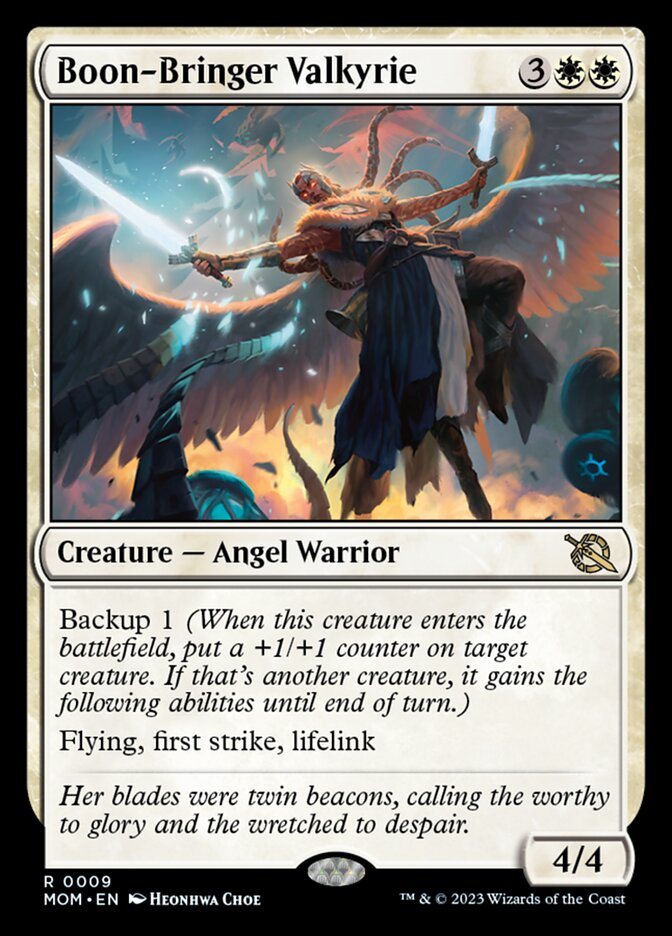
Backup
I think Backup is really neat, temporarily giving an ability off a card to another card is really good. It makes a lot of sense if you are putting a counter onto your Commander, buffing it for the turn. All kinds of shenanigans are available here, Panharmonicon letting you Backup two creatures, or one creature twice, flicker effects letting you Backup again, etc.
FromTheShire: Nothing too flashy, just steady, solid buffs. Even in decks not built around rebuying the ability, there’s a lot of great utility here tacked on to creatures that are already playable.
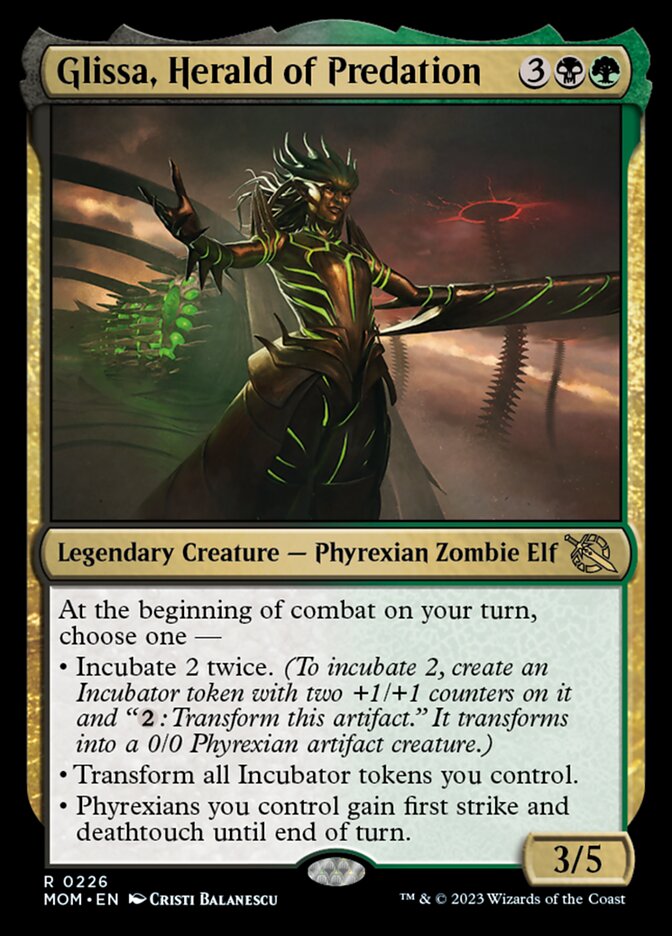
Incubation
Incubation is basically just making a new kind of Phyrexian Germ, instead of giving it equipment, it sits around as a 0/0 creature with X +1/+1 counters on it. Pay 2 to convert it. One thing I do like about these incubators is they start off not-creatures, meaning you can use board clears and things like that, and then have a ready made army. The problem is they are effectively small vanilla creatures. I’m just not blown away by this, and there’s only about 30 cards with incubate. If that’s the end of incubate it just seems like it will be another forgotten mechanic without enough support once it rotates out.
FromTheShire: Certainly seems like a mechanic not aimed at Commander play outside of something specific like a Glissa deck. Really like it for other formats. Not being a creature until after they are transformed means no Training Grounds style shenanigans.
Returning Mechanics
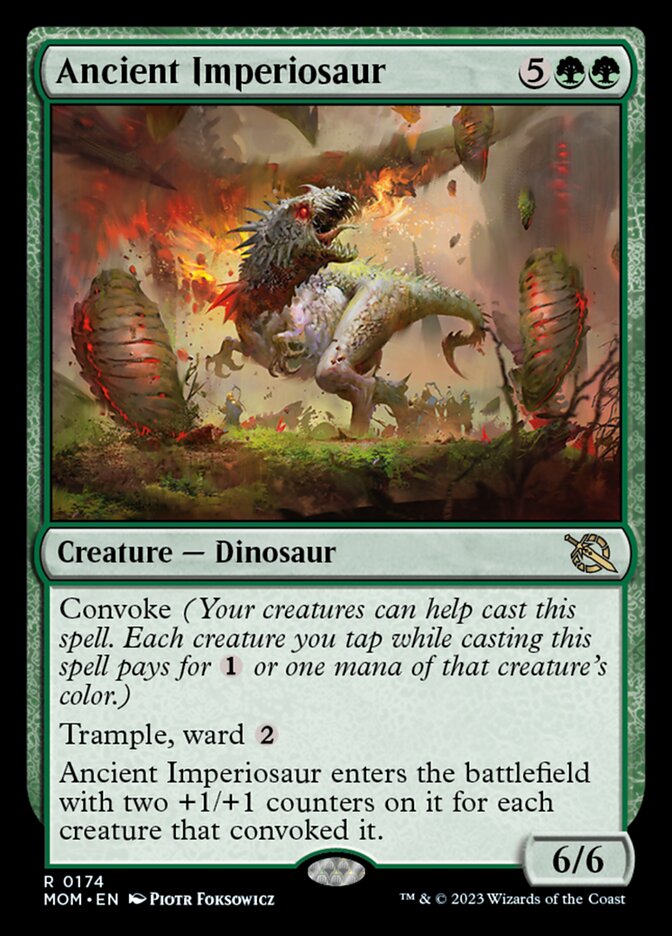
Convoke
I like convoke, I think it’s fun, it’s some kind of payoff for having token armies and being vulnerable to board clear and crowd control damage spells. Gives some more gas to go-wide decks, which I think is good. I particularly like things that payoff for being convoked. This is a solid returning mechanic.
FromTheShire: Love me some Convoke, turning all of your creatures into at least pseudo mana dorks for the turn is great. A decent selection of worthwhile spells here too, and it’s very on theme with everyone coming together to fight in the set.
Transform
Many creatures now transform, representing the compleation process I think this is a really fair way to use Phyrexian mana, it seems solid but not ridiculous, allows for some interesting color combinations and fun cards, and helps to deal with the “drew a card in the wrong phase of the game” that often permeates Magic games. Making it so you can transform only as a sorcery also prevents crazy shenanigans mid combat or anything weird like that, which has been problematic in the past (see Morph). This variant on double-faced cards I think is just really solid and works pretty well, and even fits the theme of the set.
Planechase – Chaos Ensues
New Planechase cards are appearing in the Commander decks, and these add an interesting twist in a sense to Commander. However they are also a bit strange – in a sense adding more cards to the deck is yet another mechanical way of having more than 100 cards in a deck. Thankfully WotC hasn’t gone so far as to print a Commander with a Planechase ability, but there are some cards that refer to chaos ensuing now, or cause chaos, or like the Fractured Powerstone I’ve been using as a mana rock forever, can make you roll the planar die. One issue I have with Planechase cards is, it’s just one more thing. To play them properly each player should be bringing their own 10 card Planechase deck. For each deck you own. So, Commander decks effectively become 110 card decks, except 10 of the cards must be kept separate. And in theory, you would have different 10 card plane sideboards for each deck, so if you bring 10 decks to the LGS, that’s another 100 cards you need to bring. Another “fair” option would be to just use all 103 printed planes as the shared Planechase deck. There’s a huge variance though, in what the planes actually do.
Kessig prevents all combat damage from non-werewolf creatures. Wow, that’s potentially huge. Shiv gives each creature Firebreathing. Windriddle Palaces players play with the top card of their libraries revealed and you may play the top card of any players library. That’s almost ridiculous.
FromTheShire: I am extremely, extremely happy to see more Planechase support. We have played a bunch of Planechase Commander games locally and they are always an absolute blast, full of unforeseen interactions, wild swings, and furious politicking. I really don’t see any reason why each player needs to have a set, especially a different one for each deck. As long as one person in your group has a deck of the Planechase cards, you’re all good to go, though in our experience multiple people will end up with copies since it’s such a fun game that they still want to be able to play if Steve can’t make it out to the store tonight with his.
Shuffle however many of those bad boys you have into a deck and let Chaos Ensue! It’s the point after all – Planechase is supposed to be chaotic and swingy as you jump wildly from plane to plane with no idea what might happen next, which is one of the reasons the individual deck plan is dumb as hell. I can’t even imagine why you would want to do it that way frankly, you’re taking away a big element of the experience if everyone isn’t on the same plane together. We have run them in pods of up to 8 people with a single deck of planes without issue.
For your viewing pleasure, here are the Planechase rules, from the WotC site:
PLAY RULES/MODIFIERS
Oversized cards and a planar die add just the right amount of random fun to any multiplayer game of Magic!
Shared planar deck: Start a multiplayer game and reveal the top card of the shared planar deck. That is the plane that everybody is on, and its effects apply to all players. During each player’s main phase, they may roll the six-sided planar die for a chance to take an action: If it lands on the planeswalker symbol the players must planeswalk and move on to the next plane – put the current plane on the bottom of the planar deck and reveal the next one.
If it lands on the Chaos symbol, that player must trigger the Chaos ability of the plane. The first roll each turn is free, but if the player wants to roll the planar die more than once, they must pay (1) additional for each dice roll – the second roll each turn costs (1), the third roll costs (2), and so on.
Individual planar deck: The first player gets to reveal the first plane from their own deck, and when anybody rolls the planeswalker symbol, they move on to the top plane of their own Planar deck. All other rules remain the same.
- A shared planar deck must contain at least 40 cards, or at least 10x the number of players in the game, whichever number is smaller.
- A shared planar deck also cannot contain more phenomenon cards than 2x the number of players in the game.
- Individual planar decks should contain at least 10 cards, including no more than 2 phenomenon cards. Either way, each card in a Planar deck must have a different name – you may not have multiple copies of the same plane or phenomenon in the same Planar deck.
- Game duration about 50 minutes
TheChirurgeon: I’m also very happy to see Planechase come back, and always felt it was a cool mechanic that was a lot of fun in the games my group played with it. A shared deck often feels better to me than individual decks. My favorite way to play is with the Eternities map, which was originally in an article on Wizards’ site but has been lost to time so here’s a YouTube video showing off how it works instead.
Missing Mechanics
Oil counters are gone, toxic is gone, corrupted is gone, there is a single card in the set that gives poison counters. The ridiculous release schedule means that we see a mechanic briefly then it goes away, often without enough support ever existing for a deck built around it. Poison already existed, infect already existed, so toxic and corrupted are less orphaned than many other mechanics, but I would’ve liked to see them explored a bit more, especially with payoffs other than, “that player loses the game”.
Next Time: Multicolored Cards
That wraps up our look at the set’s mechanics. Join us next time as we review the sets multicolored cards, picking out our favorites, and talking about the future build-arounds. In the meantime, if you have any questions or feedback, drop us a note in the comments below or email us at contact@goonhammer.com.
